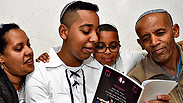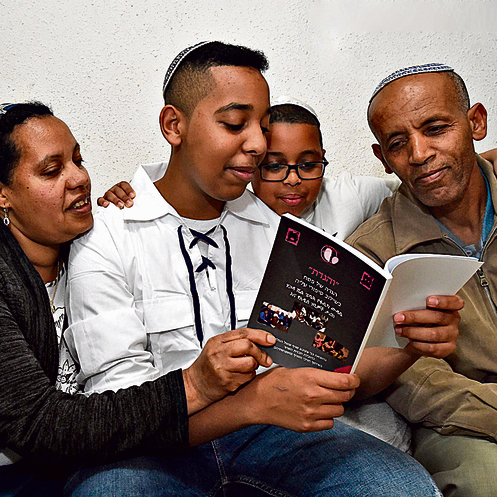

Haggadah telling story of Ethiopian immigrants connects generations
A new Hebrew-Amharic text for the Passover Seder aims to help the children of Ethiopian immigrants who were born in Israel to connect to their parents’ stories. Parents are also coming in to share their experiences with small groups.
In preparation for the Passover holiday, the Bnei Akiva branch in Beer-Sheba demonstrated a creative way to connect the parents of the Ethiopian immigrants and the children who were already born in Israel: a unique Haggadah in Hebrew and Amharic.
“I understood that the children don’t really know the story of their parents’ immigration to Israel and are less interested in their heritage,” said Tal-Tiferet Sarid, 20, the head instructor at the branch. “The moment the children absorb the story and go with it, it will reach the entire Jewish people.”
Over the past few days, the students were divided into groups, and each group met with the father or mother of one of them and heard the story of their immigration to Israel. Some of the parents found it difficult to take part and tell about their difficult experiences, but those who chose to share welcomed the initiative.
Kassa Aharon-Mahari, 49, who immigrated with her husband Ilan in Operation Moses in 1984, said, “My grandfather used to tell us about the Holy Land. He would say that a day would come, and we would go up to Israel. They should be proud of their roots and traditions, and that’s why I think it’s a beautiful project. “
“I was moved by the fact that other children hear the story of my mother in great detail and that they know the heritage of my family,” said Shai, 15, Aharon-Mahari’s son. “All of us children have to listen to our parents’ stories and understand what they’ve been through.”
Bnei Akiva welcomed the initiative. “We believe that a strong connection between the generations is a significant thing in shaping the personality of young people,” said the movement’s secretary Yair Shahal. “Only a people connected to its history can look forward.”
(Translated and edited by J. Herzog)
















